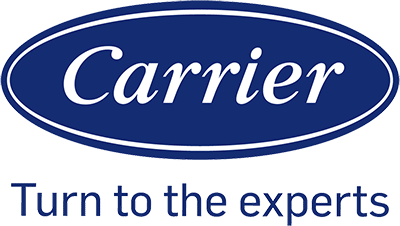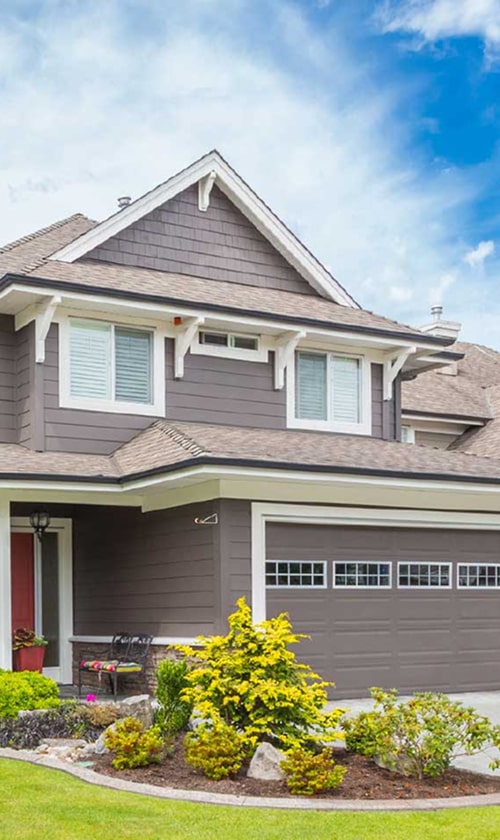Pre-Installation Assessment
A successful heat pump installation starts with careful planning. We need to look at our home’s heating and cooling requirements and check our options to make sure we choose the right system.
Evaluating Heating and Cooling Needs
Our first step is to understand how much heating and cooling our home needs. Factors like climate, home size, age of the building, insulation, and number of windows all matter.
We look at how air flows through the house and if there are any spaces that get hot or cold more easily. This helps us know where comfort problems might begin.
If we have an older system, we use our past heating and electricity bills to estimate how well it worked. This lets us compare how much more efficient a new heat pump can be.
Manual J Load Calculation
The Manual J load calculation is a recognized method to find out the exact heating and cooling needs of our house. We or the HVAC contractor collect details about the building, including square footage, window types, insulation levels, and shading.
We use these numbers to calculate how many BTUs (British Thermal Units) per hour the system must supply. This step is important because if the system is too small, it won’t keep us comfortable. If it’s too large, it wastes energy and costs more to run.
Some contractors use special software to do this calculation. It gives a precise result and helps us avoid guessing.
Selecting the Right Heat Pump
After we know our heating and cooling loads, we should compare different models. We look at energy efficiency ratings, such as SEER (Seasonal Energy Efficiency Ratio) for cooling and HSPF (Heating Seasonal Performance Factor) for heating.
We also check which types of heat pumps air-source, ductless, or geothermal fit our home and climate. For colder climates, high-efficiency or cold-climate heat pumps may be best.
We ask our HVAC contractor about the energy-efficient heat pump options in our budget range. To make the right choice, we must match the system’s capacity to our Manual J results, not just pick a popular brand.
Site Preparation and Equipment Placement

Before setting up a heat pump, we need to make sure the area is ready. A clean, well-chosen site and correct equipment placement help the heat pump work safely and efficiently.
Preparing the Installation Area
We start by selecting a spot that allows the outdoor unit to get good airflow. The area should be flat, away from heavy foot traffic, and at least 2-3 feet from any wall, fence, or shrubs.
For easy maintenance, we remove any grass, weeds, or debris. It’s important to avoid places that collect water or get snow drifts, since too much moisture can damage parts and lower performance.
We check for obstructions that might block airflow. These include fences, bushes, and other equipment. It’s also key to consider the local climate. Wet or humid areas need extra attention to drainage and insulation.
If the heat pump connects to existing ductwork, we inspect both the ducts and the area around them. This makes sure there are no leaks or gaps.
Placing the Composite Pad and Outdoor Unit
We use a composite pad as a base for the outdoor unit. The pad must be strong, weather-resistant, and perfectly level. This stops the unit from shifting or tilting over time.
We measure and mark the placement spot based on manufacturer guidelines. Then we use a level to check the pad isn’t slanted. A stable, flat base helps reduce vibration and noise from the outdoor unit.
Once the pad is set, we carefully place the outdoor unit on top. It’s important to leave space around all sides for airflow and maintenance. We may use anchors to secure the unit in windy areas.
When needed, we drill holes for wiring and refrigerant lines. We also add insulation to protect pipes from temperature changes, which is especially important in cold climates.
Indoor Installation Steps
Careful attention is needed when setting up the inside parts of a heat pump. We need to make sure the system runs efficiently and keeps our home comfortable.
Mounting the Indoor Evaporator Coil or Air Handler
We start by choosing a location for the indoor evaporator coil or air handler. It should be central in our home to allow even air distribution. For a mini-split heat pump, the wall unit is often installed high on an inside wall, away from direct sunlight and heat sources.
Steps include:
- Securing the mounting plate or brackets to the wall or ceiling
- Drilling a hole for refrigerant lines, drain hose, and wires
- Attaching the cased coil securely if we have a furnace or ducted system
- Making sure the unit is level to avoid leaks and noises
For geothermal heat pumps, the air handler or coil is placed in a utility space, like a basement. We always seal connections tightly to prevent refrigerant leaks and check the electrical hook-ups before moving to the next step.
Upgrading Insulation and Ductwork
If our heat pump uses ductwork, we check for air leaks and old insulation. Ducts with gaps or thin insulation waste energy and make our system work harder. We seal any leaks with mastic or foil tape and add insulation where needed, focusing on attics, basements, and crawl spaces.
Key upgrades:
- Fixing disconnected or crushed pieces of ductwork
- Replacing duct sections if air flow is blocked
- Adding extra insulation to ducts and around the air handler to stop heat loss
- Cleaning dust and debris to boost air quality
Properly insulated and sealed ductwork helps us get the most out of our heat pump and keeps our home more comfortable.
Connecting and Wiring Components
Setting up the heat pump involves careful handling of electrical wiring, connecting the refrigerant lines, and ensuring the thermostat is ready to control the system. Each step must be precise to make sure the unit runs safely and efficiently.
Installing Electrical Wiring and Conduit
We begin by running the electrical wiring from the main service panel to the heat pump. This involves using conduit to protect the wires and keep them organized. Conduits are usually made of metal or sturdy plastic. We secure them along walls or ceilings using approved fasteners.
Next, we install a disconnect box close to the heat pump. This box allows us to quickly shut off power during maintenance or emergencies. Using wire strippers, we remove insulation from the ends of the wires. We connect the wires to the proper terminals according to the wiring diagram supplied by the manufacturer.
Before connecting to power, we use a multimeter to check for shorts or open circuits. This helps us catch any errors before turning on the system. We double-check all electrical connections for tightness and proper labeling.
Connecting Refrigerant Lines
The refrigerant lines carry heat between the indoor and outdoor units. We use copper tubing for these lines, which come in two sizes: a larger line for vapor and a smaller line for liquid. It’s important to avoid kinks or sharp bends to keep the refrigerant flowing smoothly.
We attach the lines to the service ports on both units, using wrenches to make tight, leakproof flares. Next, we wrap insulation around the larger line to prevent energy loss and condensation. Once secure, we pressurize the lines with dry nitrogen to check for leaks. If the pressure holds, we evacuate air using a vacuum pump before charging the lines with refrigerant.
After everything is connected, we check for leaks once more using soapy water or an electronic leak detector. This step ensures there are no hidden leaks before starting the heat pump.
Setting Up the Thermostat
Setting up the thermostat connects our control center to the heat pump. We mount the device on an interior wall, away from drafts, direct sunlight, or heat sources. The wiring from the thermostat needs to match the terminals on the heat pump’s control board. Typical wires include those for power, cooling, heating, and fan control.
For a smart thermostat, we connect it to Wi-Fi and set up the app, following the manufacturer’s instructions. We use a multimeter to confirm that low-voltage wires are supplying the correct signals. After installation, we program temperature settings and check the system’s response by switching between heating, cooling, and off modes.
A clear, easy-to-read thermostat display helps us monitor and adjust the temperature as needed. Ensuring a reliable electrical connection at this stage is key for good long-term performance.
System Commissioning and Testing
We need to check every part of the heat pump installation to make sure it works well. Good commissioning helps us deliver reliable, energy-efficient heating and cooling for the building.
Charging and Recovering Refrigerant
Charging the refrigerant is an important step. We use special tools like gauges and charging scales to add the correct amount of refrigerant to the system. Too much or too little refrigerant can hurt system performance and energy efficiency.
If we need to remove refrigerant, we use a recovery machine. This machine safely pulls refrigerant from the system and stores it so there are no leaks or damage to the environment. Using the right amount of refrigerant ensures the heating seasonal performance factor (HSPF) and seasonal energy efficiency ratio (SEER) are in the expected range.
Keeping refrigerant levels just right helps the system run smoothly as a heating and cooling solution. It also helps us avoid problems that could raise energy costs or hurt system reliability.
Checking System Performance and Efficiency
To check system performance, we test how well the heat pump cools or heats the building. We measure the temperature coming in and going out of the system.
We also check energy use against the expected efficiency, such as HSPF for heating and SEER for cooling. For air-source heat pumps and geothermal heat pumps, these numbers show if the system is energy efficient as promised during installation.
We look for steady temperatures, stable pressure readings, and a quiet system. If we see higher than normal energy bills or poor performance, we look for leaks, airflow problems, or control issues and fix them during the commissioning process.
Final Inspection and Maintenance Guidance
A final inspection means we check every part of the heat pump service before turning it over to the owner. We inspect wiring, mounting, ductwork, safety switches, and the cooling system.
We clean or replace filters as needed to keep the air flowing well. We explain to building owners how to care for their heat pump, including how often to check filters and who to call for regular maintenance.
We offer a simple checklist:
- Change filters every 1–3 months
- Have a heat pump service visit at least once a year
- Watch for unusual noises or changes in heating and cooling
Clear maintenance steps prevent costly repairs and help control energy bills for years to come.




